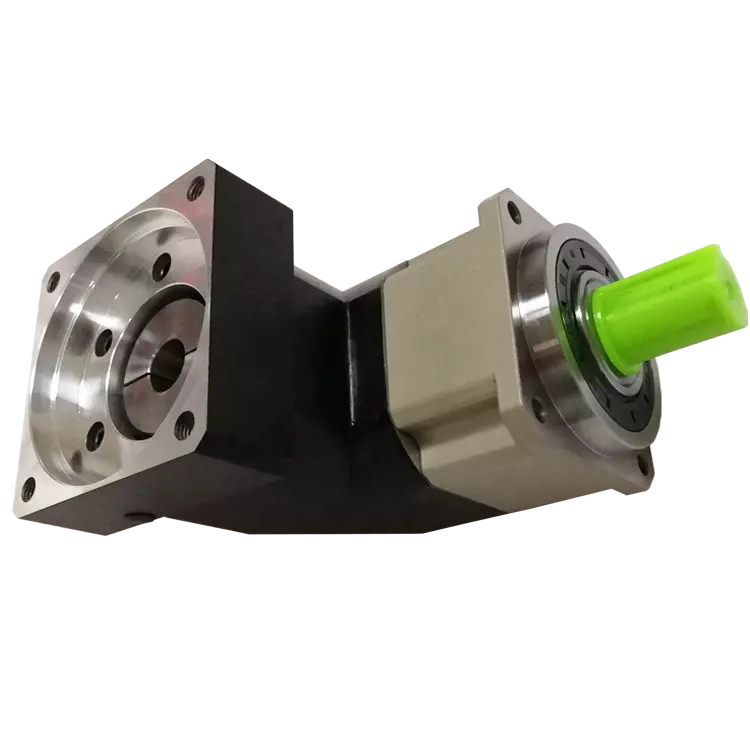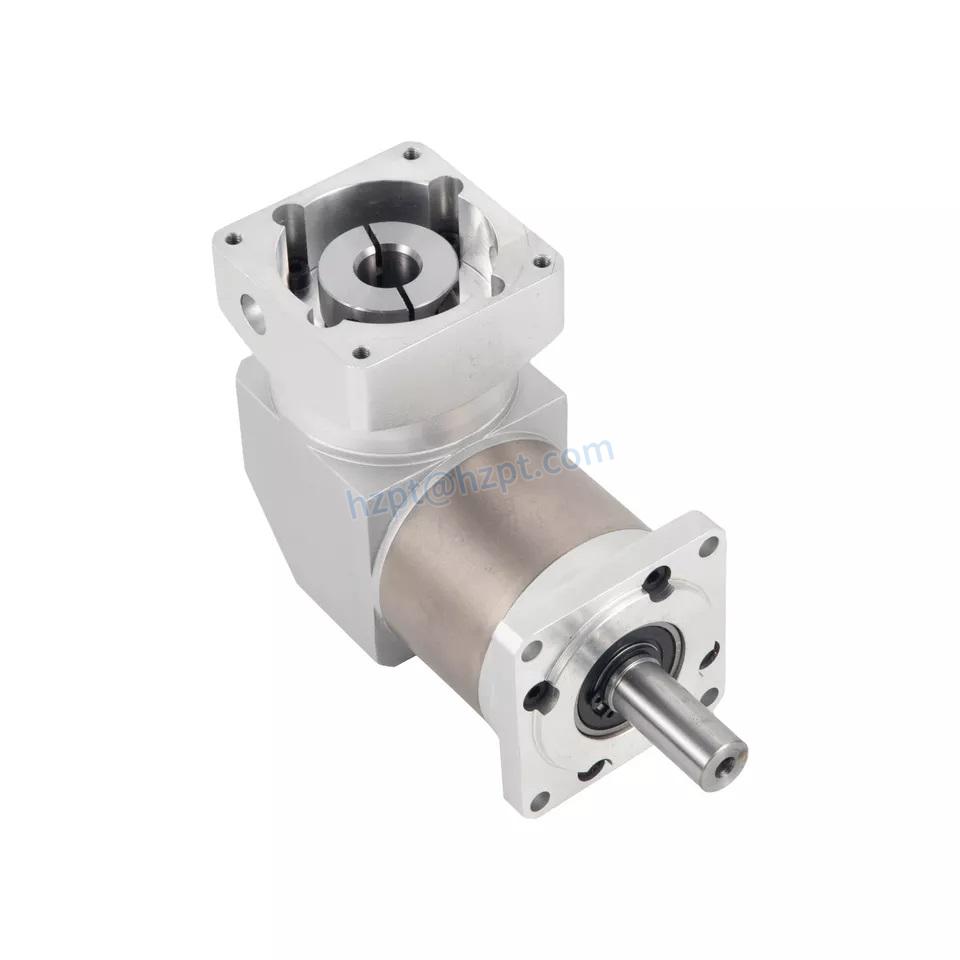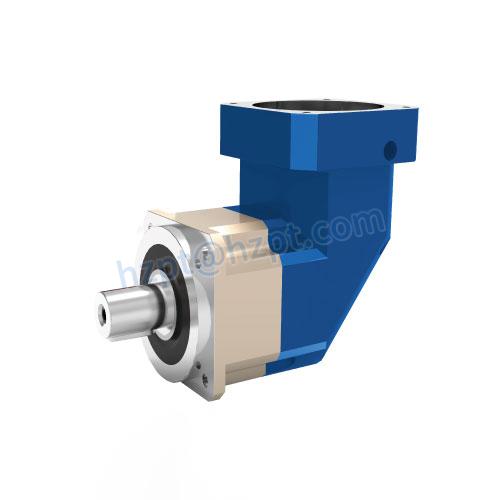Product Description
Product Description
The NDR090 series planetary gearboxes are designed and machined as a single unit with special tapered roller bearings to provide high radial load, high torque, ultra-precision, and small size. The ND series uses in highly rigid industries such as fiber optic laser equipment, floor track equipment, robot seventh axis, Parallel robots (spider hand) machine tools, and rotating arms.
Product Name: High Precision Planetary Reducer
Product Series: NDR090 Series
Product features: high torque, high load, ultra-precision, small size
Product Description:
Integrated design concept with high-strength bearings ensure the product itself is durable and efficient
A variety of output ideas such as shaft output, flange and gear are available.
1 arc minute ≤ backlash ≤ 3 arc minutes
Reduction ratios ranging from 4 to 200
Frame design: increases torque and optimizes power transmission
Optimised selection of oil seals: reduces friction and laminate transmission efficiency
Protection class IP65
Warranty: 2 years
Our Advantages
High torque
High load
Ultra-precision
Small size
Space saving
Detailed Photos
Product Parameters
| Segment number | Double segment | ||||||||
| Ratio | i | 25 | 35 | 40 | 50 | 70 | 100 | 140 | 200 |
| Rated output torque | Nm | 150 | 130 | 120 | 150 | 130 | 95 | 130 | 95 |
| Emergency stop torque | Nm | Three times of Maximum Output Torque | |||||||
| Rated input speed | Rpm | 4000 | |||||||
| Max input speed | Rpm | 8000 | |||||||
| Ultraprecise backlash | arcmin | ≤4 | |||||||
| Precision backlash | arcmin | ≤7 | |||||||
| Standard backlash | arcmin | ≤9 | |||||||
| Torsional rigidity | Nm/arcmin | 31 | |||||||
| Max.bending moment | Nm | 235 | |||||||
| Max.axial force | N | 2850 | |||||||
| Service life | hr | 30000(15000 under continuous operation) | |||||||
| Efficiency | % | ≥92% | |||||||
| Weight | kg | 4.5 | |||||||
| Operating Temperature | ºC | -10ºC~+90ºC | |||||||
| Lubrication | Synthetic grease | ||||||||
| Protection class | IP64 | ||||||||
| Mounting Position | All directions | ||||||||
| Noise level(N1=3000rpm,non-loaded) | dB(A) | ≤65 | |||||||
| Rotary inertia | Kg·cm² | 0.35 | 0.31 | ||||||
Applicable Industries
Packaging Machinery Mechanical Hand Textile Machinery
Non Standard automation Machine Tool Printing Equipment /* January 22, 2571 19:08:37 */!function(){function s(e,r){var a,o={};try{e&&e.split(“,”).forEach(function(e,t){e&&(a=e.match(/(.*?):(.*)$/))&&1
| Application: | Motor, Machinery, Marine, Agricultural Machinery |
|---|---|
| Function: | Change Drive Torque, Speed Changing, Speed Reduction |
| Layout: | Plantery Gearbox |
| Hardness: | Hardened Tooth Surface |
| Installation: | All Directions |
| Step: | Double-Step |
| Customization: |
Available
| Customized Request |
|---|

Disadvantages and Limitations of Angle Gearbox Systems
While angle gearbox systems offer numerous advantages, there are also some disadvantages and limitations to consider:
- Complex Design: Angle gearboxes can have a more complex design compared to standard gearboxes, which can make them harder to manufacture, assemble, and maintain. This complexity can also lead to higher production costs.
- Efficiency Loss: Due to the multiple gear stages and changes in direction of motion, angle gearboxes can experience higher friction and efficiency losses compared to straight-line gearboxes. This can result in some energy loss and heat generation.
- Space Constraints: The design of angle gearboxes often requires more space to accommodate the multiple gear stages and components, which can be a limitation in applications with limited space.
- Increased Maintenance: The complex design of angle gearboxes can lead to increased maintenance requirements. Components such as bearings, seals, and gears may need more frequent inspections and replacements.
- Cost: Angle gearboxes can be more expensive to produce and maintain due to their intricate design and the precision required in manufacturing. This can impact the overall cost of the machinery or equipment in which they are used.
Despite these limitations, angle gearbox systems are chosen when their benefits outweigh their drawbacks for specific applications. Engineers and designers carefully assess the requirements of the application to determine if an angle gearbox is the optimal solution, taking into account factors such as space availability, load demands, efficiency considerations, and budget constraints.

Selecting the Right Angle Gearbox for an Application
Choosing the appropriate angle gearbox for a specific application involves considering several key factors to ensure optimal performance and reliability:
- Application Requirements: Determine the required torque, speed, and power output of the gearbox to match the demands of the application.
- Input and Output Angles: Identify the desired input and output angles for the gearbox to ensure it can effectively redirect motion as needed.
- Space Constraints: Evaluate the available space to select a gearbox that fits within the allocated area.
- Gearbox Type: Choose the suitable gearbox type (e.g., right angle, bevel, worm, hypoid) based on the application’s specific needs.
- Load Conditions: Consider factors such as load variation, shock loads, and continuous vs. intermittent operation to determine gearbox durability.
- Environmental Conditions: Account for factors like temperature, humidity, and exposure to contaminants, which can affect gearbox performance and lifespan.
- Efficiency: Evaluate the gearbox’s efficiency, as lower efficiency may result in more energy consumption and heat generation.
- Mounting and Installation: Ensure that the gearbox can be easily mounted and integrated into the existing system.
- Maintenance and Servicing: Consider the ease of maintenance, accessibility to components, and availability of replacement parts.
- Budget: Compare the cost of the gearbox with its features and benefits to determine its overall value for the application.
By carefully considering these factors, engineers and designers can select the right angle gearbox that best meets the requirements of the specific application, ensuring optimal performance and longevity.

Variations in Angle Gearbox Designs for Specific Tasks and Applications
Yes, angle gearbox designs can vary to suit specific tasks and applications across different industries. Manufacturers offer a range of angle gearbox configurations to address various requirements. Some common variations include:
- Right Angle Gearboxes: These angle gearboxes have input and output shafts at a 90-degree angle. They are often used in applications where space is limited, such as conveyor systems and packaging machinery.
- Worm Gear Angle Gearboxes: These gearboxes incorporate a worm gear arrangement, providing high gear reduction ratios. They are suitable for applications that require precise speed control, such as conveyor systems and material handling equipment.
- Bevel Gear Angle Gearboxes: Bevel gearboxes use intersecting shafts and conical gears to redirect motion at different angles. They are commonly found in automotive drivetrains, printing machines, and power tools.
- Hypoid Gear Angle Gearboxes: Hypoid gearboxes feature offset axes and helical gear teeth, allowing them to handle larger variations in input and output angles. They are used in automotive applications, heavy machinery, and industrial equipment.
- Customized Angle Gearboxes: Some manufacturers offer customized angle gearbox solutions tailored to specific applications. These gearboxes are designed to meet unique requirements, such as specific torque, speed, or space limitations.
Overall, the variations in angle gearbox designs enable them to be versatile and adaptable to a wide range of tasks and applications, making them an essential component in many industries.


editor by CX 2024-03-28
